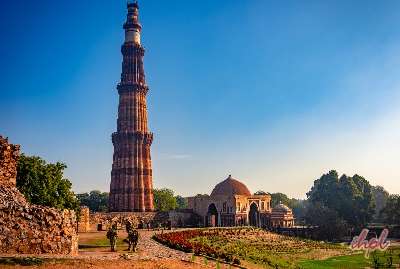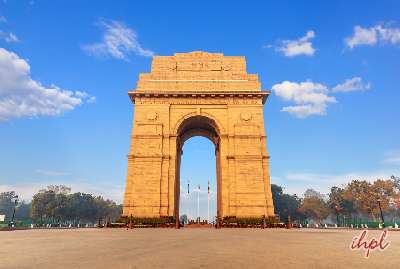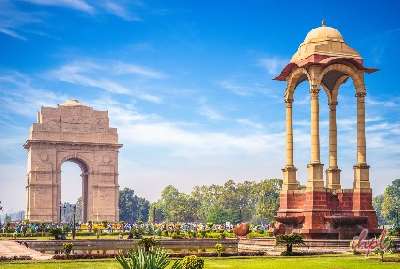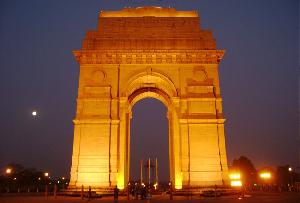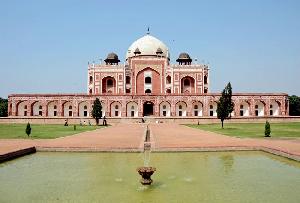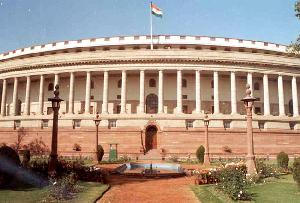You must have heard Razia Sultan? She was the only woman who managed to rule over the capital of India in the medieval era. In a city like Delhi, which has been treaded by a number of Muslim dynasties across centuries leading to an upsurge of tombs, monuments and memorials for homage to kings, queens and scholars—this brave woman has also made her place. Very close to the Sitaram Bazaar and Kalan Masjid, Razia Sultan’s Tomb in Delhi is located in Bulbuli Khane locale.
Amidst the cramming alleys and crowdy lanes, you will spot Razia Sultan’s Tomb, erected on a raised platform within the premises of an open courtyard. While Razia Sultan’s Life unravels tale of courage and determination, that of her sister remained shrouded in mystery. Ironically, her tomb was constructed beside the grave of Saziya, Razia’s sister. One hand, you will find a serene center for prayer on the western side, on the other, you will notice two other graves in the southwestern side. Incidentally, the detail of these two graves still remains a mystery.
Life of Razia Sultan:
Razia Sultan, the first woman who ruled medieval India during Muslim empire, was known for her bravery, her generosity and wisdom. Razia Sultan’s Life speaks of her leadership qualities that made her very popular among her subjects. Iltutmush, emperor of Slave Dynasty chose his daughter, Razia Sultana to succeed the throne of Delhi when his son died in a war. Iltutmush appreciated Razia’s knack in political and administrative issues and her undaunted fighting spirit as a warrior.
History says that Razia used to run the empire whenever her father left the country for a while. However, when Iltutmush died, Rukn-ud-din Firuz, one of his sons, usurped the throne and held on to the helm for about seven months. Finally in 1236, Razia gathered support of her subjects and defeated her brother. Hereafter began Razia’s full-fledged but short-lived reign. Adorning the outfit of a man, Razia handled the administration, politics and battlefields of her empire. Gradually an Ethiopian slave, Jalal-ud-din Yaqut, became her confidante, which provoked her Turkish subjects with rebellion.
The rebellion brewed intensively amongst her Turkish subjects, who conspired against her. Mutiny took place in Lahore and Bhatinda. When Razia left Delhi to clamp on the rebellion in Bhatinda, her brother, Bahram was elected the new king. Razia failed to recapture the throne and was killed at Kaithal in District Karnal.
Though her reign was just for three years, her bravery, her struggle and her undaunted spirit has been preserved in the treasures of history. Razia Sultan’s Tomb in Delhi is one of those places, which relives the unthwarted spirit of the brave woman who ruled Delhi once and for all.
Fast – Facts:
Location:
You have to stroll down a bit from Turkman Gate and reach Razia Sultan’s Tomb in Bulbuli Khane locale, which is east of Kalan Masjid and near Sitaram Bazaar.
Built By: Behram Shah, Razia Sultan’s brother
When was it was built: 13th century
Special Feature- Two graves in the south western side the details of which are unknown
How to Reach:
You can reach this tomb by boarding any of the buses from any point of Delhi. You can also hire a cab or an auto-rickshaw.
Nearest International Airport: Indira Gandhi International Airport
Nearest Metro Station: Chawri Bazaar
Nearest Railway Station: Old Delhi Railway Station
Open: On all seven days of the week
Nearby Attractions:
As you come to Delhi, you must visit Razia Sultan’s Tomb. Razia Sultan’s Tomb in Delhi will impress you with its serene ambience and the legendary tale of the Queen’s courage and warrior-spirit, who reigned Delhi for three years during medieval period.
As you feel awe-inspired by the spirit of Razia Sultan’s life, you may also try out exploring various other New Delhi Tourist Attractions.
Kalan Masjid-
One of the seven mosques built by the prime minister of Feroz Shah Tughlaq, this masjid is located near Razia Sultan’s tomb.
Turkman Gate-
The southern gate of the old walled city, this gate was named after the Muslim saint, Hazrat Shah Turkman Bayabani. This gate is square with high arched openings.
Red Fort-
Red Fort was built in 1638 so that it could function as a center for Mughal government. The fort will impress you with the red sandstone walls full of turrets and bastions. Founded on a dry moat in the northeast corner of Shahjahanabad, it also has halls of public and private audience
Jama Masjid-
The largest mosque in India was built by Mughal Emperor, Shahjahan in 1656 AD. This mosque exhibits a blend of both Hindu and Islamic styles of architecture
Chandni Chowk-
Chandni Chowk was designed and laid by Jahanara Begum, Mughal emperor Shahajahan’s daughter. This famous market was founded to satisfy Jahanara Begum’s shopping spree.
Salimgarh Fort-
Salimgarh Fort was constructed on an island of river Yamuna and was used as a state prison during the reign of Aurangzeb. History says that the members of Indian National Army were also imprisoned here in 1945. Renamed as Swatantrata Senani Smarak, it has been converted into memorials of the freedom fighters.
Kashmeri Gate-
One of the important gates of Shahjahanabad, this gate has double openings, one for entrance and the other for exit. During the sepoy mutiny of 1857, intense war was fought here.
St James Church-
Built by the famous Colonel James Skinner, this church imitates St Paul’s Cathedral in London.
Lothian Cemetery-
Located near Kashmeri Gate, it is the first British cemetery of Delhi.
Rajghat–
It is a memorial to Mahatma Gandhi, the father of the nation, It has a simple black marble platform where Gandhiji was cremated after his assassination on 31 January, 1948.
Nearby Shopping Venues:
You should also visit Nai Sarak for books, Chor bazaar for electronic goods and Chatta Chowk in Red Fort for traditional and contemporary jewellery




